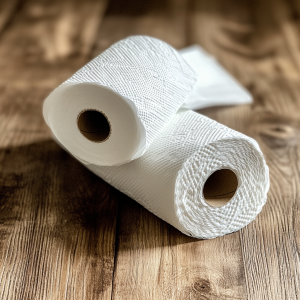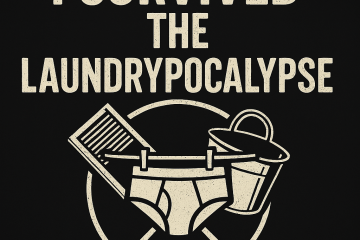
DIY baby wipes
As a prepper, I’ve learned that being prepared means thinking about every possible scenario – even the messiest ones. That’s right, I’m talking about diaper changes. Now, I don’t have kids of my own, unfortunately, but as the oldest sibling in my family, I’ve changed more diapers than I care to count. Trust me, in a crisis, you don’t want to be caught without a way to clean up those little bundles of joy (and other things).
For a while, I thought I had it all figured out. I’d been stockpiling wet wipes like they were going out of style. But here’s the kicker – they were going out of style, right in their packages. I’d open up a pack I’d stored away, only to find it had turned into a brick of dry, useless paper. It was like trying to clean a baby with sandpaper, and let me tell you, that’s not a fun experience for anyone involved.
So, I decided to take matters into my own hands – literally. DIY baby wipes became my new prepper project. Not only are they more reliable in the long term, but they’re also cheaper and more environmentally friendly. It’s like hitting the prepper trifecta!
DIY Baby Wipes
Here’s my go-to recipe for homemade baby wipes that’ll keep your little ones (or your siblings’ little ones) clean and happy, even when the world’s gone crazy:
- Start with a roll of heavy-duty paper towels. Cut it in half width-wise – you now have two shorter rolls. (Yes, you’re cutting through the entire roll in one fail swoop. It’s like magic, but with more practical results.
- In a mixing bowl, combine 2 cups of distilled water, 2 tablespoons of gentle, a gentle scented liquid soap-something earthy, such as lavender from Bath and Body Shop works great, and 1 tablespoon of baby oil or coconut oil. (You don’t want the scent to be irritating to the baby’s bottom so stay on the mild side of things or get unscented) If you’re feeling fancy, add a few drops of lavender essential oil. It won’t make the babies smell any less like babies, but it might make you feel better.
- Put one of your half-rolls in an airtight container. I use an old ice cream tub – it’s the perfect size and gives me an excuse to eat more ice cream. Pour your liquid mixture over the paper towels, making sure to distribute it evenly.
- Close the lid and flip the container upside down. Let it sit for about 5 minutes. This is a good time to contemplate why you decided to become a prepper in the first place.
- Open the container and pull out the cardboard tube from the center of the roll. Your wipes should now pull out from the middle, just like the store-bought kind, but with 100% more prepper pride.
The beauty of this system is that you can make these wipes as you need them. No more dried-out wipes, no more wasted money, and no more frantic

DIY baby wipes
runs to the store when you realize you’re out of wipes in the middle of a diaper change (or worse, in the middle of a zombie apocalypse).
DIY Reusable Wet Wipes
Now, for those of you who are thinking even further ahead (and let’s face it, as preppers, that’s all of us), I’ve got another trick up my sleeve: fabric wipes. That’s right, we’re taking this DIY project to the next level of sustainability.
Here’s how to make reusable fabric wipes:
- Gather some soft, absorbent fabric. Old t-shirts, flannel sheets, or even those baby blankets your teenager has finally outgrown work great. Just make sure they’re clean and free of any zombie apocalypse stains.
- Cut the fabric into squares about 8×8 inches. Don’t worry about perfect edges – in a disaster, no one’s going to critique your cutting skills.
- If you’re feeling fancy (and have electricity), you can sew around the edges to prevent fraying. If not, just call the frayed edges “rustic” and move on.
- Store your dry fabric wipes in a clean container. When it’s time to use them, just add some of the same liquid mixture we used for the paper towel wipes. Presto! You’ve got reusable wet wipes.
- After use, toss the dirty wipes in a wet bag or dedicated bucket until you can wash them. Yes, this means doing laundry during a crisis, but hey, it beats running out of wipes when the stores have been looted.
The beauty of this system is that you can make these wipes as you need them, whether you’re using paper towels or fabric. No more dried-out wipes, no more wasted money, and no more frantic runs to the store when you realize you’re out of wipes in the middle of a diaper change (or worse, in the middle of a zombie apocalypse).
Remember to keep your DIY wipe ingredients in your prepper stash. A few rolls of paper towels, some gentle soap, and baby oil don’t take up much space, but they’ll be worth their weight in gold when you need them. And hey, if the world doesn’t end, you can always use them for regular, non-apocalyptic diaper changes. It’s a win-win!

DIY wet wipes
But wait, there’s more! These DIY wet wipes aren’t just for babies’ bottoms. In a pinch, they make excellent impromptu shower wipes for adults too. Picture this: you’re three days into a power outage, starting to smell like a locker room, and your neighbor invites you over for a game of candlelit Monopoly. A quick wipe-down with these bad boys, and you’ll be feeling fresh and ready to bankrupt your friends in style. They’re like a shower in a box, minus the water pressure and the regrettable singing. (And this conserves water! Woohoo! Bonus!)
So there you have it – my foolproof plan for making sure that in any disaster, at least the babies (and you) will have clean bottoms and relatively fresh-smelling armpits. Because let’s face it, when the world goes to pieces, the last thing you want to deal with is a diaper rash or body odor that can fell a bear. Stay prepared, my friends, and may your wipes always be moist and your babies (and you) always be clean!


